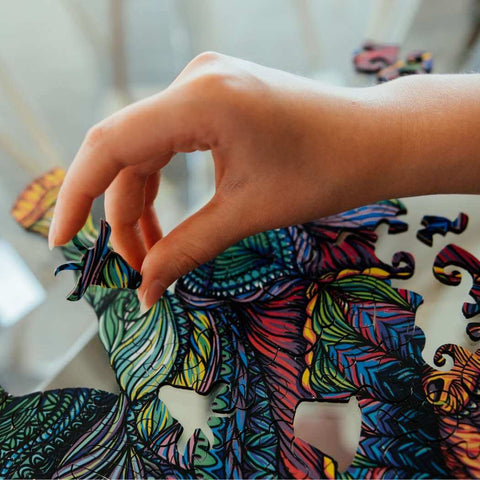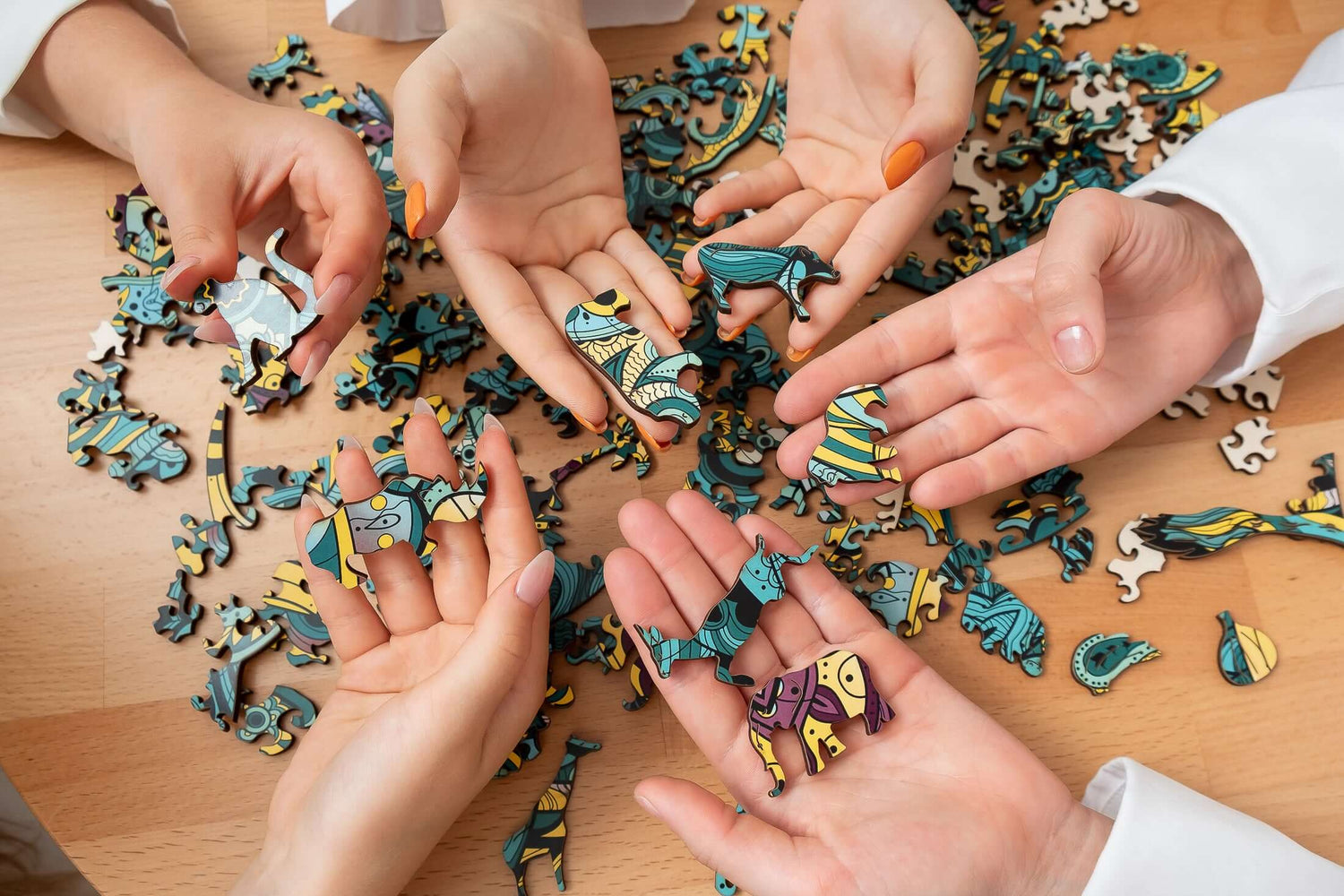
The origin of puzzles
Share
Do you know for what purpose the first wooden puzzle was created?
First of all, assembling a puzzle is creating something beautiful and releasing stress at the same time. This entertainment consists of hundreds or thousands of unique pieces available in a variety of designs and levels of difficulty and its origin is in the education and teaching of geography and not in a leisure activity, as it is believed. The objective of a jigsaw or puzzle is to form a figure by combining its parts, which are dissected into different parts.

For this reason, you can enjoy assembling a wooden puzzle, choosing your favorite puzzle from any of our collections, the magical animal wooden puzzles collection or the Van Gogh wooden puzzles collection.
John Spilsbury, an expert map designer, cartographer and geographer for the British royal family, created the first puzzle in 1760. It was a map of Europe assembled on a wooden board and hand-cut, right on the borders of each country. In this way, children could learn geography in a very visual way. This educational use lasted until around 1820. As a consequence, Spilsbury began to sell wooden puzzles with the most interested subjects for parents, such as the world, continents, except Oceania, which was not yet known, and the United Kingdom, tables math and bible scenes.
Consequently, this idea quickly became fashionable among English high society, becoming a very popular custom to surprise visitors with this elegant entertainment, which, because it was exclusive, became part of the family heritage and tradition.
In addition, until the 19th century the pieces were made of wood and had to be cut by hand, piece by piece so that they fit perfectly, which increased their price. In 1860, Milton and McLaughlin Bradley began manufacturing puzzles in series from plywood, when the pedal saw was invented.

The original name of the puzzle was dissection or dissected map and they were named that way until the 19th century, when they began to be called "jigsaw" and "puzzle" as early as the 20th century.
Did you know when the wooden puzzle as we know it began to be manufactured today?
Also, in the 20th century, puzzles began to be made out of cardboard, which lowered the price considerably and became accessible to the working class. During the Great Depression period in the United States, it was believed that his popularity would decline, but nevertheless, 10 million units were sold a week. At first, no reference image was included in the adult puzzles, and it was not until it was finished that it was known what image it would have.
From the twentieth century, the pieces began to fit together as we know it today, because, they were not assembled, but rather that some pieces were coupled with others, which made their construction much more complicated, due to any sneeze or small movement could spoil all the work.
Between 1920 and 1930 there was the golden age of puzzles, they could already be found with varied themes and the materials could be wood or cardboard, although manufacturers preferred to make them in wood because it brought them more benefit. Novelties began to be introduced, such as ragged edges and false corners.
In 1931, Einson-Freeman, a businessman from the United States, began to use puzzles as a marketing tool, giving away puzzles for the purchase of a product and in 1932 the idea of "puzzle of the week" arose. Every week a new puzzle was released at a reasonable price that could be bought, which became very popular with the lower and middle class.
On the other hand, after World War II, the sale of wooden puzzles went into decline. The production was mostly cardboard and the theme of reproductions of works of art was introduced.

As a curious fact, it is believed that the most complicated puzzle to assemble is the work "Convergence" by Pollock.
Today, most manufacturers adhere the desired image to a card stock and the pieces are cut by pressing with steel blades. On the other hand, we find the technology of laser cutting that allows a more durable material, such as wood, to be cut more easily.
Due to the pandemic caused by the coronavirus that began in 2020, it has become fashionable to carry out activities at home, including assembling wooden puzzles. Manufacturers and designers have realized this need and have set to work to create puzzles that can be assembled at home, with family or friends and once completed, hang them on walls or showcases decorating as a work of art. Such as, the puzzles made of natural ecological birch wood from Active Puzzles.
Finally, we remind you that we have launched a wooden magical animal puzzles collection and Van Gogh collection, which you are going to love.
Do you want to know more about Active Puzzles world and our Facebook, Instagram, Linkedin and Pinterest?
Would you like to talk about a specific topic? Do you want to ask me anything? Email us at info@activepuzzles.com, I'll be happy to read you.
What are you waiting for to start assembling a puzzle? Get your favorite wooden puzzle now.
